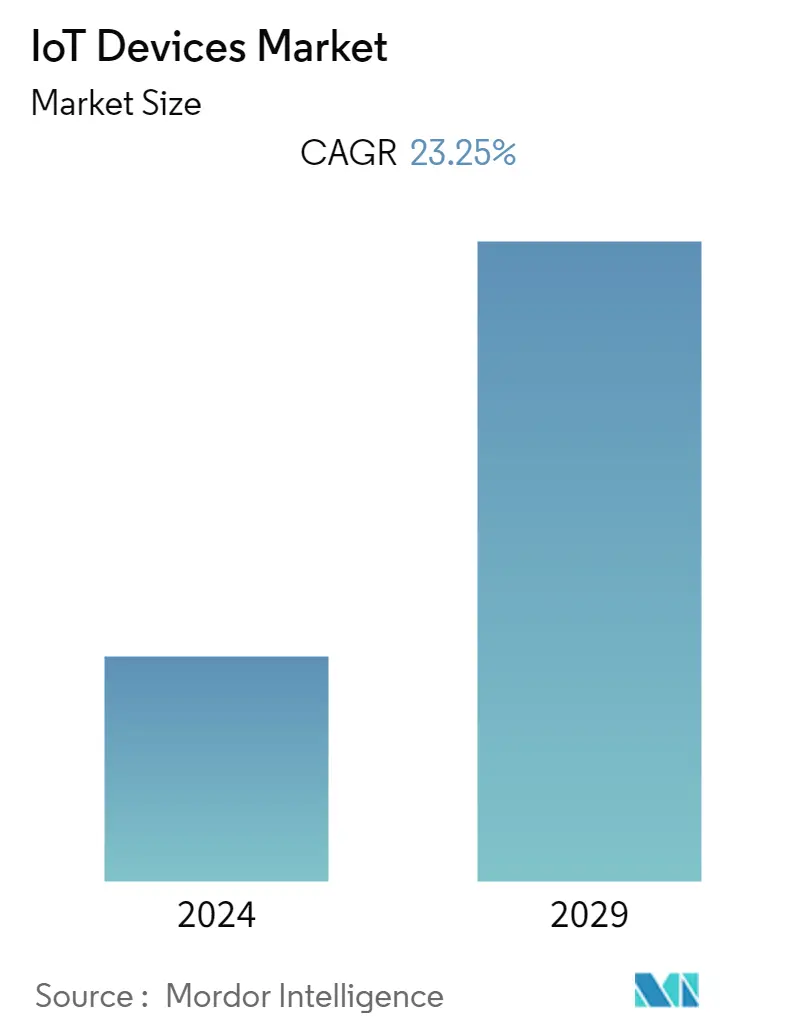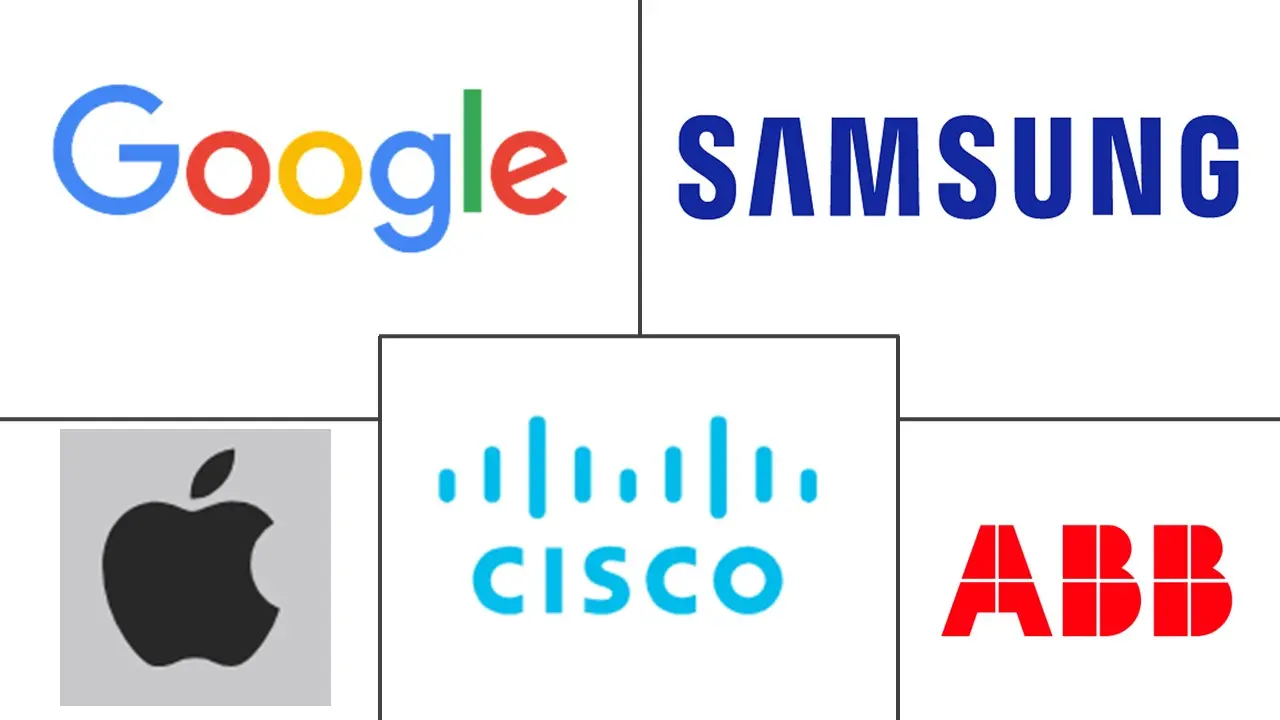Market Size of IoT Devices Industry

| Study Period | 2019 - 2029 |
| Base Year For Estimation | 2023 |
| CAGR | 23.25 % |
| Fastest Growing Market | Asia Pacific |
| Largest Market | North America |
| Market Concentration | Low |
Major Players
*Disclaimer: Major Players sorted in no particular order |
Need a report that reflects how COVID-19 has impacted this market and its growth?
IoT Devices Market Analysis
The IoT devices market was estimated at USD 98.06 billion in the current year. The market is expected to register a CAGR of 23.25%, reaching USD 336.64 billion in five years. IoT technology is the foundation for different enterprises to undergo a digital transformation, enabling them to improve current operations by developing and monitoring new business models. IoT has been viewed as the primary enabler in boosting digital transformation and uncovering operational efficiencies by businesses and service providers.
- IoT devices might benefit more from data transmission speeds. IoT adoption and development are reliant on 5G as a trend. Predictive speeds of up to 10Gbps are possible with this technology. IoT networks' analysis and other capabilities will advance, along with the speed and accessibility of data exchange. 5G will revolutionize how IoT equipment operates and communicates with lower latency rates and more capacity.
- The growing trend of adopting connected devices in various sectors positively influences the market studied. According to Ericsson, the number of massive IoT connections is expected to have doubled, reaching nearly 200 million. According to Ericsson, by the end of 2027, 40% of cellular IoT connections will likely be broadband IoT, with 4G connecting most of them. However, with the introduction of 5G New Radio (NR) in the old and new spectrum, throughput data rates are expected to increase substantially for this segment.
- The Internet of Things (IoT) requires dependable connectivity and communications to establish proper data-sharing networks. Due to consumer demand, operators and developers have a wide selection of connectivity technologies.
- Open standards are critical enablers for the success of wireless communication technologies, such as RFID or GSM, and, in general, for any machine-to-machine communication (M2M). Without globally recognized standards, the expansion of RFID and M2M solutions to the Internet of Things (IoT) cannot reach a global scale. The need for faster setting of interoperable standards has been recognized as an essential factor for deploying IoT applications. It may hinder the usage of IoT devices if the implementation does not gain significant traction.
- IoT is significantly being utilized for monitoring patients' health status during the COVID-19 pandemic. For instance, in April 2020, SPHCC announced that it is using Bluetooth IoT products and solutions provider Cassia Network's gateways and VivaLNK's medical wearable sensors to monitor COVID-19 patients. Cassia's IoT Access Controller, a network management tool, is used by medical staff to monitor patients and provide a better real-time view of their vitals. Cassia's gateways allow almost 40 Bluetooth low-energy devices to be paired and connected simultaneously while giving the long-range connectivity required to cover several rooms in the SPHCC.
